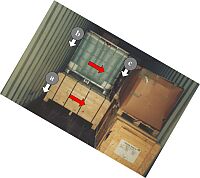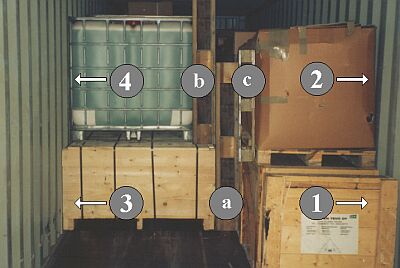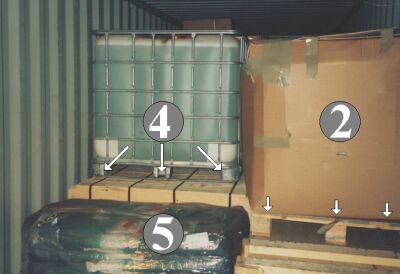 |
||
| Gaps in a box container | ||
The deficiencies become clearer when the container is tilted 30° about its longitudinal axis.
 |
 |
This tilt corresponds to lateral acceleration of 0.5 g, as has to be taken into account in road and rail transport too.
The bare minimum required to eliminate these deficiencies is packing the packages (1), (2) and (3) and (4) tightly against the container side walls and filling the gaps then remaining in the middle with the pallets (a), (b) and (c).
 |
||
| Improvements to a packed container section | ||
For maritime transport, the container section must not be left like this, since inertia forces stemming from the IBC (4) are transferred in part via the pallets to the package (2) and may compress and damage the latter. This may create enough space for the container contents to "self-destruct".
 |
||
| Bracing against a container side wall | ||
Thus, if pallets are used to improve packing, they must be prevented from making any movement, which may be achieved with two squared lumber members (d) fitted crosswise. The compressive forces they may cause should be distributed to part of the container side wall using a board (e). The squared lumber should be secured from below against sliding down by squared lumber or board ends (f). In some cases, attachment to the pallet may suffice.
The packing inadequacies are clearly visible in this picture too:
 |
The carton (2) is obviously too weak and is standing loosely on the pallet-like base.
Intermediate Bulk Containers (IBC) (4) generally have very small contact areas and can only be stowed without using dunnage on container floors or stable set-down surfaces, such as the wooden case shown here.
Individual bagged cargo pallets (5) should where possible to packed into the upper layers, since overstowing them with other cargo requires the use of interlayer dunnage.